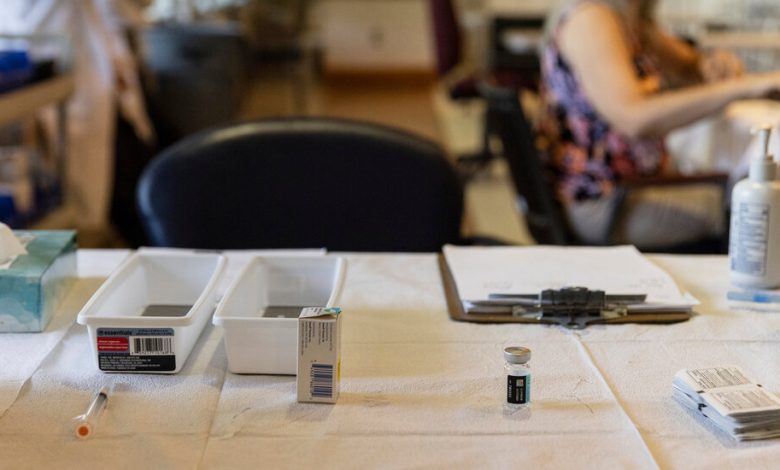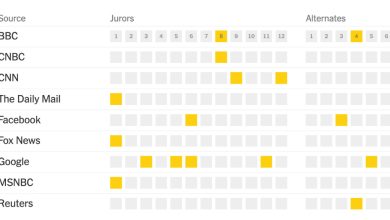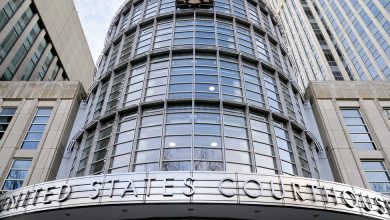Hochul Declares Polio State of Emergency for New York

Gov. Kathy Hochul of New York declared a state of emergency on Friday over the growing polio outbreak, in an effort to better equip health care providers with tools to curb the spread of the sometimes disabling virus before it takes further hold in the state.
The order allows emergency service workers, midwives and pharmacists to administer the polio vaccine. The declaration also requires health care providers to send polio immunization data to New York health officials so that they can determine where in the state to target vaccination efforts.
“On polio, we simply cannot roll the dice,” Dr. Mary T. Bassett, the state health commissioner, said in a statement on Friday. “Do not wait to vaccinate.”
The first polio case in nearly a decade was identified in July in New York State. Officials said an unvaccinated man in Rockland County was infected by virus that had been shed from someone who received the oral polio vaccine, which has not been administered in the United States since 2000. The oral vaccine is safe, but contains small amounts of weakened live virus that can circulate and strengthen if communities are undervaccinated.
In August, New York City officials said they had identified polio in the city’s wastewater. On Friday, state health officials announced that they had identified polio in 57 samples collected from several downstate counties between May and August. The majority of the samples were collected in Rockland County, and 50 of them were genetically linked to the case of the Rockland resident.
Read More on Polio in New York
The virus was one of the most feared diseases until the 1950s, when a vaccine was developed. Its reappearance has caused concern for unvaccinated populations.
- Virus Resurfaces: Officials in a New York suburb reported a case of polio in an unvaccinated adult man in July — the first U.S. case in nearly a decade.
- Sewage Analysis: The virus has since been detected in wastewater samples, suggesting it was circulating in New York as early as April and has been spreading elsewhere for a year.
- Immunization History: In light of the news on polio, some young Americans found themselves reaching out to parents and guardians to inquire about their polio vaccination status.
Thirteen of the samples were collected in Orange County, six were collected in Sullivan County and one was collected in Nassau County.
State health officials have marked seven of the samples containing polio as a particular concern because they have not been linked to the Rockland County case. Officials plan to continue monitoring wastewater to track the spread.
The polio vaccination rates in counties where the samples were collected are lower than those in the rest of the state, according to state data published in August. The statewide average rate for polio vaccination among children under 2 years old is around 79 percent. The rate in Rockland County was around 60 percent. The rate in Orange County was around 59 percent. And the rate in Sullivan County was around 62 percent.
In New York City and Nassau County, the rates of vaccination are higher. In Nassau, the polio vaccination rate for children under the age of 2 is around 79 percent. In New York City, around 86 percent of children who are 5 and under are vaccinated.
Rates of vaccination vary widely among ZIP codes, however, according to state and city data.
Orange and Rockland Counties are both home to large numbers of Hasidic Jewish residents, and anti-vaccine sentiment has spread among some in that community. But other communities also have low vaccination rates because of a variety of factors.
Officials said they wanted to see the polio vaccination rate rise above 90 percent. State data counts children who have received three polio immunizations before their second birthday as vaccinated.
Polio can cause mild or flulike symptoms, but the disease can also be disabling and life-threatening. It mainly affects infants and children under 5, but anyone who is unvaccinated can contract it. Polio is contagious and spreads from person to person, typically through contact with the fecal matter of someone who is infected. There is no cure for polio but widespread vaccination has proved effective.
Ms. Hochul’s declaration came as many New York students began their first week of school, and as some parents continue to worry about the spread not only of polio but also the monkeypox virus. However, the risk of a polio infection is low for most students in New York City, and attending school is also unlikely to expose students to monkeypox.
Sharon Otterman contributed reporting.




